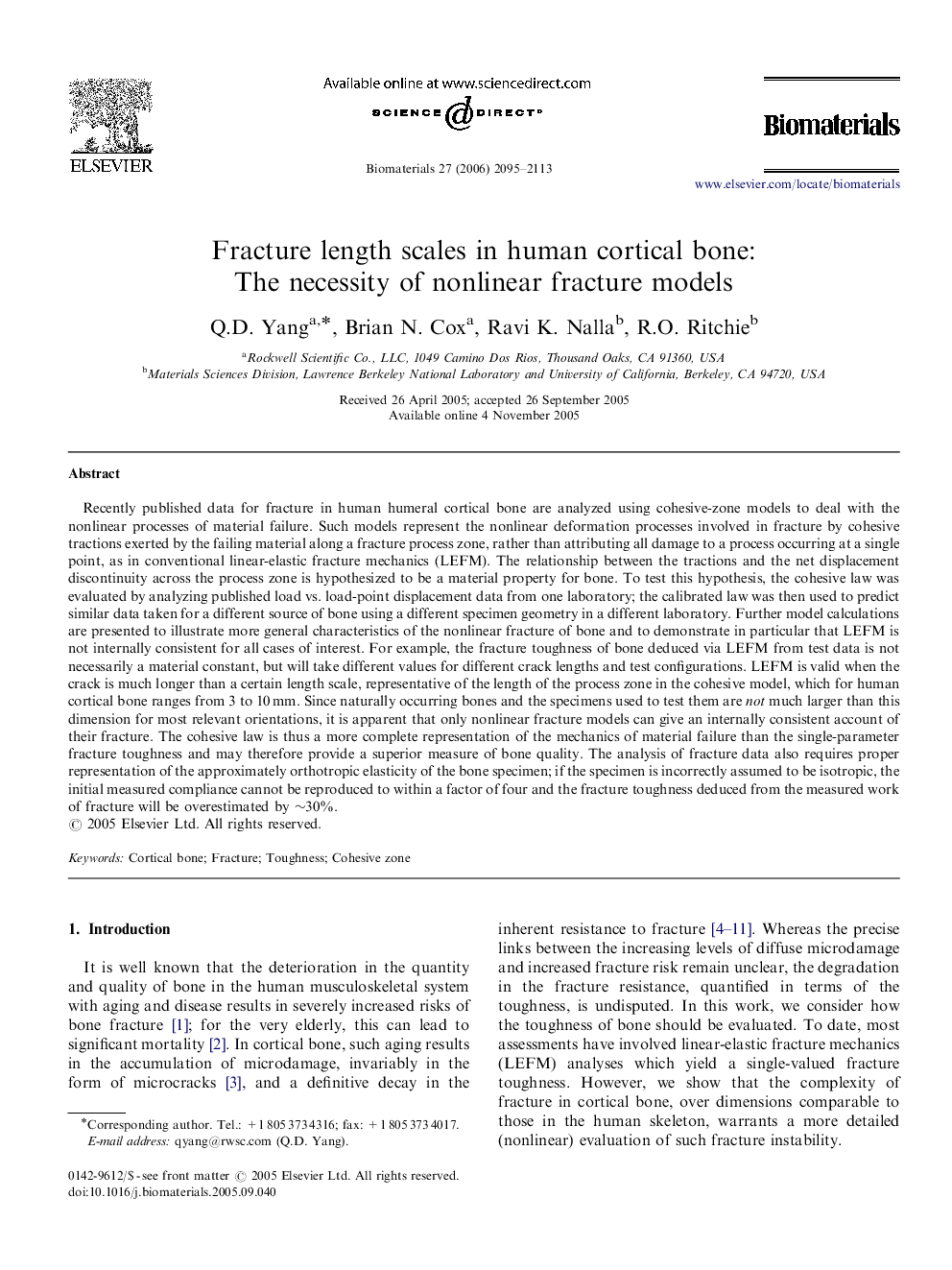| کد مقاله | کد نشریه | سال انتشار | مقاله انگلیسی | نسخه تمام متن |
|---|---|---|---|---|
| 10805 | 702 | 2006 | 19 صفحه PDF | دانلود رایگان |

Recently published data for fracture in human humeral cortical bone are analyzed using cohesive-zone models to deal with the nonlinear processes of material failure. Such models represent the nonlinear deformation processes involved in fracture by cohesive tractions exerted by the failing material along a fracture process zone, rather than attributing all damage to a process occurring at a single point, as in conventional linear-elastic fracture mechanics (LEFM). The relationship between the tractions and the net displacement discontinuity across the process zone is hypothesized to be a material property for bone. To test this hypothesis, the cohesive law was evaluated by analyzing published load vs. load-point displacement data from one laboratory; the calibrated law was then used to predict similar data taken for a different source of bone using a different specimen geometry in a different laboratory. Further model calculations are presented to illustrate more general characteristics of the nonlinear fracture of bone and to demonstrate in particular that LEFM is not internally consistent for all cases of interest. For example, the fracture toughness of bone deduced via LEFM from test data is not necessarily a material constant, but will take different values for different crack lengths and test configurations. LEFM is valid when the crack is much longer than a certain length scale, representative of the length of the process zone in the cohesive model, which for human cortical bone ranges from 3 to 10 mm. Since naturally occurring bones and the specimens used to test them are not much larger than this dimension for most relevant orientations, it is apparent that only nonlinear fracture models can give an internally consistent account of their fracture. The cohesive law is thus a more complete representation of the mechanics of material failure than the single-parameter fracture toughness and may therefore provide a superior measure of bone quality. The analysis of fracture data also requires proper representation of the approximately orthotropic elasticity of the bone specimen; if the specimen is incorrectly assumed to be isotropic, the initial measured compliance cannot be reproduced to within a factor of four and the fracture toughness deduced from the measured work of fracture will be overestimated by ∼30%.
Journal: Biomaterials - Volume 27, Issue 9, March 2006, Pages 2095–2113